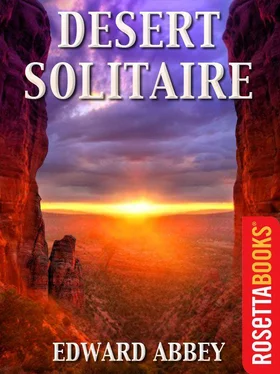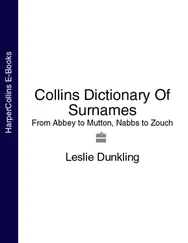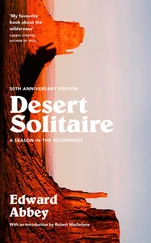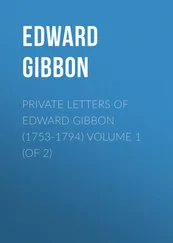Abbey, Edward - Desert Solitaire (Edward Abbey Series )
Здесь есть возможность читать онлайн «Abbey, Edward - Desert Solitaire (Edward Abbey Series )» — ознакомительный отрывок электронной книги совершенно бесплатно, а после прочтения отрывка купить полную версию. В некоторых случаях можно слушать аудио, скачать через торрент в формате fb2 и присутствует краткое содержание. Год выпуска: 2011, Издательство: RosettaBooks, Жанр: Старинная литература, на английском языке. Описание произведения, (предисловие) а так же отзывы посетителей доступны на портале библиотеки ЛибКат.
- Название:Desert Solitaire (Edward Abbey Series )
- Автор:
- Издательство:RosettaBooks
- Жанр:
- Год:2011
- ISBN:нет данных
- Рейтинг книги:4 / 5. Голосов: 1
-
Избранное:Добавить в избранное
- Отзывы:
-
Ваша оценка:
- 80
- 1
- 2
- 3
- 4
- 5
Desert Solitaire (Edward Abbey Series ): краткое содержание, описание и аннотация
Предлагаем к чтению аннотацию, описание, краткое содержание или предисловие (зависит от того, что написал сам автор книги «Desert Solitaire (Edward Abbey Series )»). Если вы не нашли необходимую информацию о книге — напишите в комментариях, мы постараемся отыскать её.
Desert Solitaire (Edward Abbey Series ) — читать онлайн ознакомительный отрывок
Ниже представлен текст книги, разбитый по страницам. Система сохранения места последней прочитанной страницы, позволяет с удобством читать онлайн бесплатно книгу «Desert Solitaire (Edward Abbey Series )», без необходимости каждый раз заново искать на чём Вы остановились. Поставьте закладку, и сможете в любой момент перейти на страницу, на которой закончили чтение.
Интервал:
Закладка:
Lying within the bounds of a national monument, these rocks and artifacts are protected by law. That is, you are welcome to look, to pick up and examine but not to remove. And justly so. For without such protection the area would soon be picked clean by souvenir hunters, acquisitive rockhounds and the commercial merchandisers of stones. For my own part I seldom take rocks home, no matter where I might find them; in my opinion they are best enjoyed in situ , where God Himself, so to speak, and the leisurely economy of Nature have seen fit to deposit them.
Petrified wood is also common in the canyon country. Not so much in the vast formations of sandstone which bulk largest in the landscape but at odd, irregular places where clays, shales and mudstones appear. Among the liver-colored hills along the Paria; under the Orange Cliffs west of the standing rocks; in the exquisitely carved façades that line the Fremont River; and in general in any sort of “badlands” or painted-desert terrain. Nothing so extensive or spectacular as the deposits in Petrified Forest National Park, to be sure, but interesting and beautiful just the same. The gradual cell-by-cell replacement or infiltration of buried logs by hot, silica-bearing waters in a process so exact that the original cellular structure of the wood is preserved in all its detail forms this desert jewelry—agatized rainbows in rock. Coming unexpectedly upon such a trove a man is sometimes overcome by greed; by the mad desire to possess it all, to load his pockets, his knapsack, his truck with these hard lustrous treasures and somehow transport them all from the wilderness to the shop, garage and backyard. An understandable mania; packrats, hoarding string, tinfoil, old shoes and plastic spoons, suffer from the same instinct. So that over the surface of the earth a general redistribution of all that is loose, not nailed or bolted down, takes place, hastening the processes of geology, and continents sag at the edges. Silly perhaps but not in the long run harmful; nothing is really lost except that epiphenomenon known as human delight. This too will be replaced.
Up north in the Roan Cliffs are seams of low-grade coal; and throughout an area larger than many states where Utah, Colorado and Wyoming meet lies an immense reserve of shale oil—riches for somebody. But these are not strictly speaking rock forms. There are traces of gold in the Colorado River and the sunken ruins of gigantic dredges; a few lead, zinc and silver mines scattered about; but the only rock which has so far proved to be of commercial value in the canyon country is that called carnotite. Carnotite, a greenish-yellow ore, is a complex mineral containing radon gas, vanadium and—uranium.
Here was a treasure. Spurred by the exciting demands of the Cold War the Atomic Energy Commission, soon after our technicians had shown what they could do (Hiroshima, Nagasaki), began to promote an intensive search for uranium. With known deposits in the Southwest, the search was concentrated here, attracting fortune-hunters from everywhere. Some struck it rich; the professional geologist Charles Steen after years of patient development and hard-luck frustrations suddenly patented a mine he called (with revealing pathos) Mi Vida . Aided by a discovery bonus from the A.E.C., financed by the bankers of Denver and Salt Lake City, he bought heavy mining equipment and a fleet of ore trucks, hired miners and truckers, built an ore-reduction mill on the banks of the Colorado, and became after years of effort a happy if beleaguered millionaire. He constructed a modest mansion on a rocky waterless ledge overlooking Moab; invited relatives, friends and neighbors in for one great barbecue after another; endured threats of blackmail and kidnapping (he had children) from mysterious strangers; built a garrison-type steel fence topped with barbed wire around his entire property and employed guards and a gatekeeper; planted trees along the fence to soften the warlike aspect; ran for public office and was elected; tried to legalize hard liquor and was defeated; sold his mill to the Vanadium Corporation of America; moved elsewhere; came back; moved again.
Another prospector, an amateur but equally fortunate, was Vernon Pick. Drifting in from somewhere out of the Midwest, he lost himself for weeks at a time among the haunted monoliths and goblin gulches above the Dirty Devil River; poisoned himself drinking its foul waters but survived to locate deep in that intricate voodooland a smoldering radioactive hoard which he named, poetically, The Hidden Splendor.
Some of the native Utahns also made money, particularly the ones shrewd enough the moment the boom took off to hustle out into the boondocks and stake claims on everything in sight. A few of these claims were developed and some yielded a profitable tonnage of uranium ore; but most of the wealth was acquired not in mining but in the trading and selling of claims and shares in mining companies which never got beyond the paperwork. Speculation was the big thing; and the money poured in from all over the United States from those persons, always numerous in our society, eager to profit from the labor of others, anxious to harvest what they had not sown. But here was planting, of a sort—the variety known in the industry as “salting”—and many investors, betrayed by their greed, were taken for a jolly ride.
The serious prospecting was carried out by the technicians of the Atomic Energy Commission. Equipped with powerful scintillometers, they cruised in airplanes back and forth above the Colorado Plateau, mapping the hot spots. The information thus obtained was made available to the public but usually too late. The small-time prospector, grinding in by jeep, would arrive in time to see the helicopters of some big mining company rising skyward and the land neatly staked out in acres and acres of identical claims.
Despite such unfair competition the more persevering among the amateur prospectors, climbing over the landscape with their cheap little Geiger counters in hand, sometimes succeeded in finding a source of radiation all their own. The next step was to stake a claim and have it filed with the county recorder. But now their problems were only beginning. Before they could raise the money to finance a mining operation it was necessary to have core samples taken in order to assay the quality and the extent of the uranium deposit. This meant first of all bulldozing a road into the claim; then if they had any money left or could borrow more they had to hire or lease a drilling rig. All very expensive procedures. If the drilling proved out they might be ready to go into business. Or might not, depending upon still other factors, such as the expense of trucking the ore from mine to mill.
The A.E.C. provided a guaranteed market at a guaranteed price for a period of ten years beginning in 1949 for all of the uranium ore—at or above a specified grade—which the miners could produce. Plus a discovery bonus of ten thousand dollars. But even so it became apparent after a time that only large-scale operations—in this as in most other businesses—would make a profit. Also the many small ore pockets scattered about the canyon country were soon made insignificant by the location of vast contiguous bodies of uranium in the Ambrosia Lake district of New Mexico and in Ontario. The small independent miners in Utah, forced to transport their ore long distances over the tire-busting, axle-breaking, clutch-burning terrain of the canyonlands (where roads run every way but straight), found themselves up against the overwhelming competition of such giants as the Anaconda Corporation, with generals and admirals on its governing board and senators on the invisible payroll. When the A.E.C.’s ten-year guarantee ran out most of the independents went out with it—out of business.
Читать дальшеИнтервал:
Закладка:
Похожие книги на «Desert Solitaire (Edward Abbey Series )»
Представляем Вашему вниманию похожие книги на «Desert Solitaire (Edward Abbey Series )» списком для выбора. Мы отобрали схожую по названию и смыслу литературу в надежде предоставить читателям больше вариантов отыскать новые, интересные, ещё непрочитанные произведения.
Обсуждение, отзывы о книге «Desert Solitaire (Edward Abbey Series )» и просто собственные мнения читателей. Оставьте ваши комментарии, напишите, что Вы думаете о произведении, его смысле или главных героях. Укажите что конкретно понравилось, а что нет, и почему Вы так считаете.












